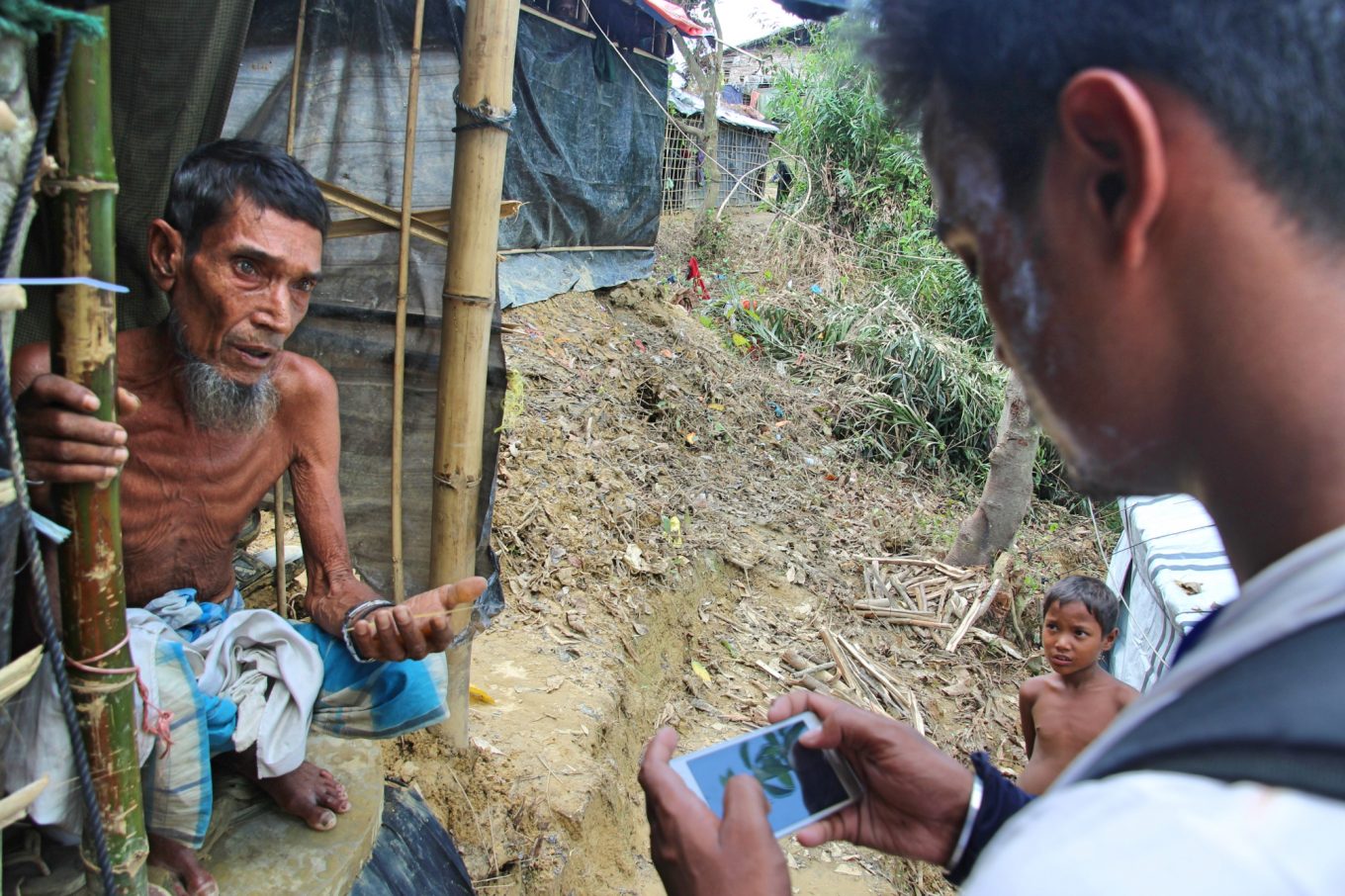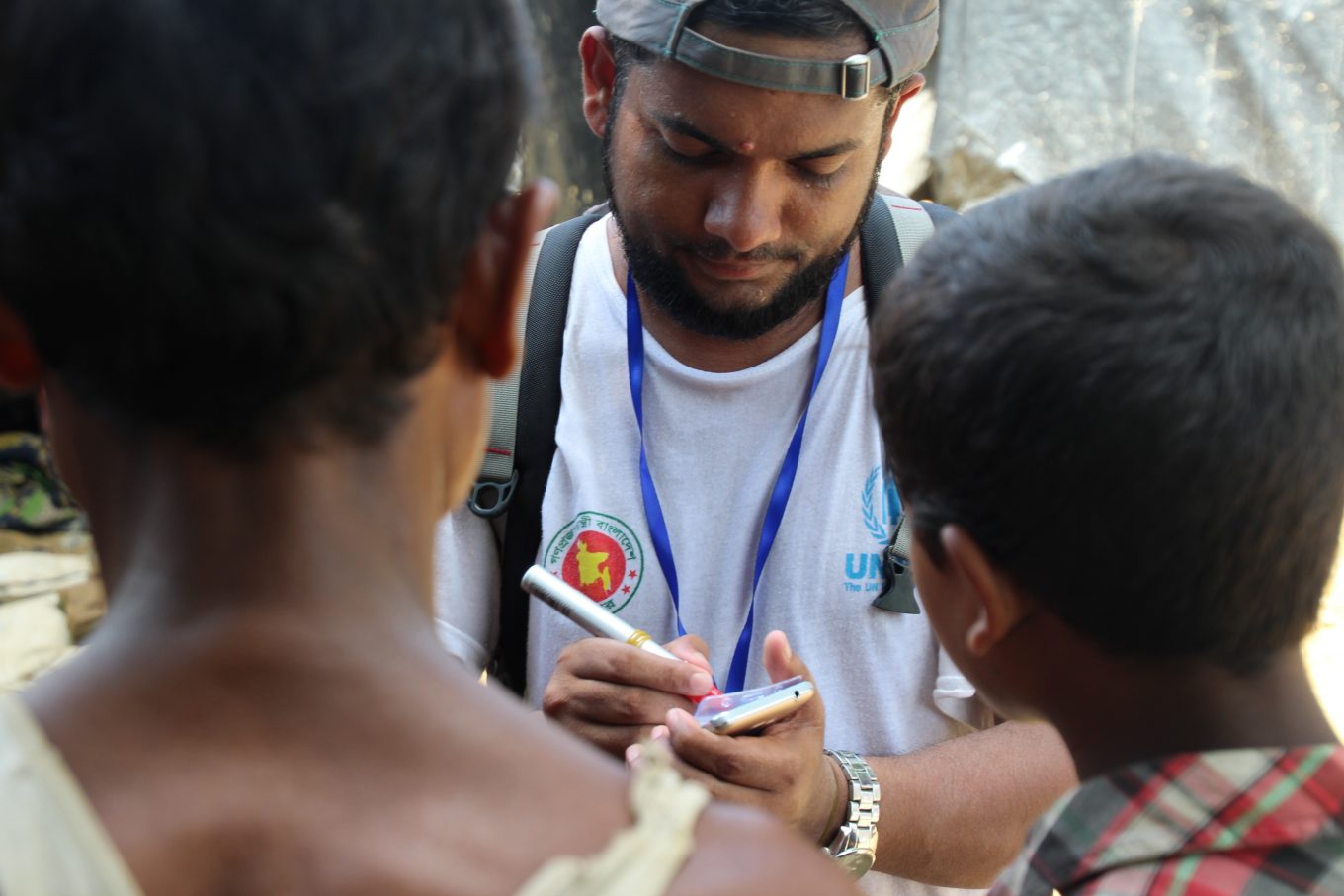On October 4th, the Refugee Relief and Repatriation Commissioner (RRRC) launched a family counting exercise with the support of UNHCR, to identify protection needs and harmonize assistance among the refugee population in Cox’s Bazar.

© UNHCR/ Tamas Almos/ An enumerator from the Family Counting exercise visiting families in Balukhali refugee camp, collecting household level information on his smartphone.
What is Family Counting?
A team of over 100 staff is currently collection data on newly arrived refugee families. They capture crucial information such as the place of origin, date of arrival, family size, name of the head of family, and family composition by age and sex breakdown. They also list all the vulnerabilities as well as the category of assistance received by the newly-arrived so far.
This data, including a photo of the family, together with a basic indicator of the family’s location based on zones, and GPS coordinates of the family’s residence, is uploaded into KoBoToolbox, an open source tool designed to collect humanitarian data in the field. Data can be collected via a smartphone app even without Internet connectivity.
Each family is then given a card delivered by Bangladeshi authorities with a unique identifier number, key to access life-saving assistance and protection. Aside from its practical benefits, the card is also providing a small measure of identity to the refugees.
What is the scope of this exercise?
The RRRC and UNHCR are planning to count and estimated 105,000 families, representing 500,000 individuals during the month of October in Kutupalong, including the Kutupalong and Balukhali makeshifts and extension sites.
How will the data be used?
The collected data will serve as an essential baseline for humanitarian assistance and site planning, providing fundamental information for instance on density per locations. The results of the Family Counting exercise will be shared with other UN Agencies and partners to better assign aid, protecting the most vulnerable while avoiding duplication.

© UNHCR/ Tamas Almos/ Children and elderly refugees on their own, single mothers with small infants, or people with disabilities are identified during family counting. The exercise is key to flag special protection needs.
When will individual registration be conducted?
While the Family Counting is ongoing for mainly assistance purposes, the Ministry of Home Affairs of Bangladesh, with UNHCR support, is biometrical registering individual refugees and issuing them with a provisional ID document. So far, around 150,000 individuals have been registered and this number will increase once the new sites have become a stable refugee camp. Meanwhile, the International Organization for Migration (IOM), through the Inter Sector Coordination Group (ISCG) is also publishing population estimates.
